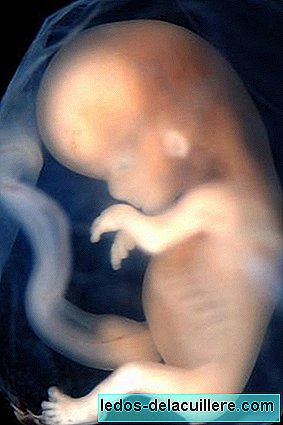
The placenta is an organ that forms inside the uterus during pregnancy and helps nourish the baby and filter the excess waste that is generated during the months of gestation. As the pregnancy progresses, the placenta evolves, and in its evolution the placenta can be classified into four degrees of maturity: 0, I, II and III.
During the second and third trimesters of pregnancy the placenta presents physiological changes that allow this numerical classification by stages or degrees based on the aspect of intraplacental calcifications.
From the ultrasound point of view there are several classifications, but it is that of Grannum of 1979 the best known.
- Placenta grade 0: characterized in that the basal plate (near the uterus) and the corial plate (near the fetus) are sonographically sonographic. Smooth chorionic plate without calcification areas.
- Placenta grade I: when you already have small white areas on ultrasound (eco-cooling). In the corial plate certain fine and undulating calcifications are identified, randomly dispersed, and the basal plate has no calcifications.
- Placenta grade II: consists of placentas whose basal plate is fully identified and gives the impression that it is separated from the myometrium (muscular layer of the wall of the uterus). In the corial plate it is visualized with a very wavy profile with diffuse calcifications. The placenta is not homogeneous due to the different echogenicities in its thickness due to calcium deposition. The partitions that penetrate the placenta do not come together.
- Placenta grade III: are placentas with large calcium deposits at all levels. Both the basal plate and the corial appear highly eco-cooling (white color). The partitions of both parts of the placenta already converge and merge with each other. Inside the placental cotyledons (the balls that form the chorial villi), calcification and degeneration zones are observed.

When a placenta occurs in grade II or III before week 34, it can be said that it is prematurely aged. We have already explained when it is said that there is old placenta or hypermadura.
This could lead us to think that the baby will develop a restriction in its development due to placental insufficiency, since this insufficiency produces, in the fetus, hypoxemia and nutritional deficit. The latter is a cause of intrauterine growth retardation, so it is important to perform adequate prenatal control, especially in the final stage of pregnancy.
The development of the placenta usually follows a uniform pattern until 20 weeks. Then, its volume increases according to the needs of the fetus. He intrauterine growth retardation Asymmetric is usually caused by processes that begin after 24 weeks and lead to placental insufficiency, with premature aging.
Applying the classification of Grannum, placenta grade II or III is associated before 34 weeks in 60% of fetuses with delay of rejection and grade I or II before 30 weeks in 80%.
The Grannum classification (grades 0-3) is the best known; subsequently other authors, such as the Spaniards of the Source and Olaizola, make another classification (grades I-IV), which correlates with that of Grannum, with the same criteria of placental differentiation.
Definitely, the degrees of maturity of the placenta constitute the classification that can be used to determine the evolutionary moment in which said organ is located, and comprises from the youngest 0 to the third grade, the most mature grade. They are observed by ultrasound and are important for the control of fetal health in the final stretch of pregnancy.












